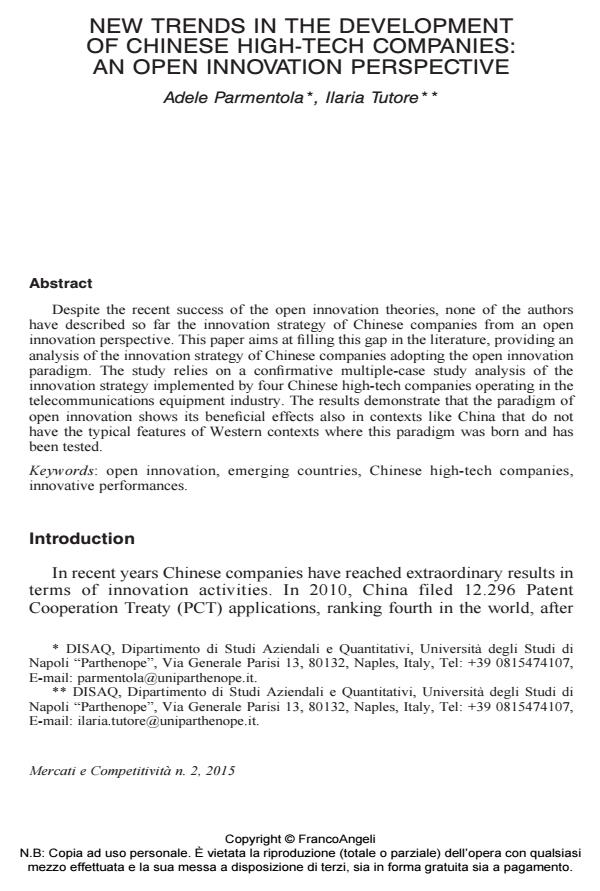New trends in the development of Chinese high-tech companies: an open innovation perspective
Titolo Rivista MERCATI E COMPETITIVITÀ
Autori/Curatori Adele Parmentola, Ilaria Tutore
Anno di pubblicazione 2016 Fascicolo 2016/1
Lingua Inglese Numero pagine 32 P. 71-102 Dimensione file 169 KB
DOI 10.3280/MC2016-001005
Il DOI è il codice a barre della proprietà intellettuale: per saperne di più
clicca qui
Qui sotto puoi vedere in anteprima la prima pagina di questo articolo.
Se questo articolo ti interessa, lo puoi acquistare (e scaricare in formato pdf) seguendo le facili indicazioni per acquistare il download credit. Acquista Download Credits per scaricare questo Articolo in formato PDF

FrancoAngeli è membro della Publishers International Linking Association, Inc (PILA)associazione indipendente e non profit per facilitare (attraverso i servizi tecnologici implementati da CrossRef.org) l’accesso degli studiosi ai contenuti digitali nelle pubblicazioni professionali e scientifiche
Despite the recent success of the open innovation theories, none of the authors have described so far the innovation strategy of Chinese companies from an open innovation perspective. This paper aims at filling this gap in the literature, providing an analysis of the innovation strategy of Chinese companies adopting the open innovation paradigm. The study relies on a confirmative multiple-case study analysis of the innovation strategy implemented by four Chinese high-tech companies operating in the telecommunications equipment industry. The results demonstrate that the paradigm of open innovation shows its beneficial effects also in contexts like China that do not have the typical features of Western contexts where this paradigm was born and has been tested.
Parole chiave:Open innovation, emerging countries, Chinese high-tech companies, innovative performances
- OPEN INNOVATION IN COMPLEX ECOSYSTEMS: KNOWLEDGE NETWORKS AND BEYOND Burcu Türkcan, Meltem Ince Yenilmez, in Bilgi Ekonomisi ve Yönetimi Dergisi /2025 pp.131
DOI: 10.54860/beyder.1503811
Adele Parmentola, Ilaria Tutore, New trends in the development of Chinese high-tech companies: an open innovation perspective in "MERCATI E COMPETITIVITÀ" 1/2016, pp 71-102, DOI: 10.3280/MC2016-001005